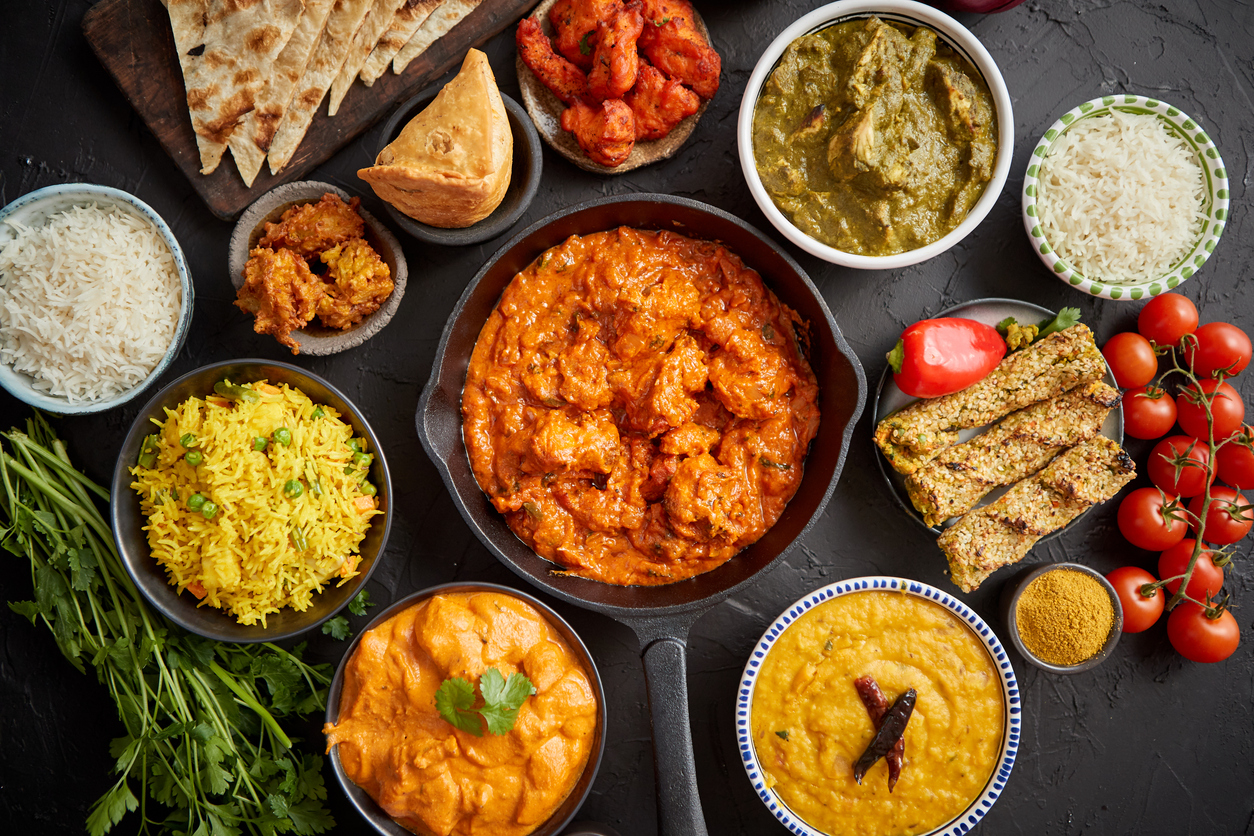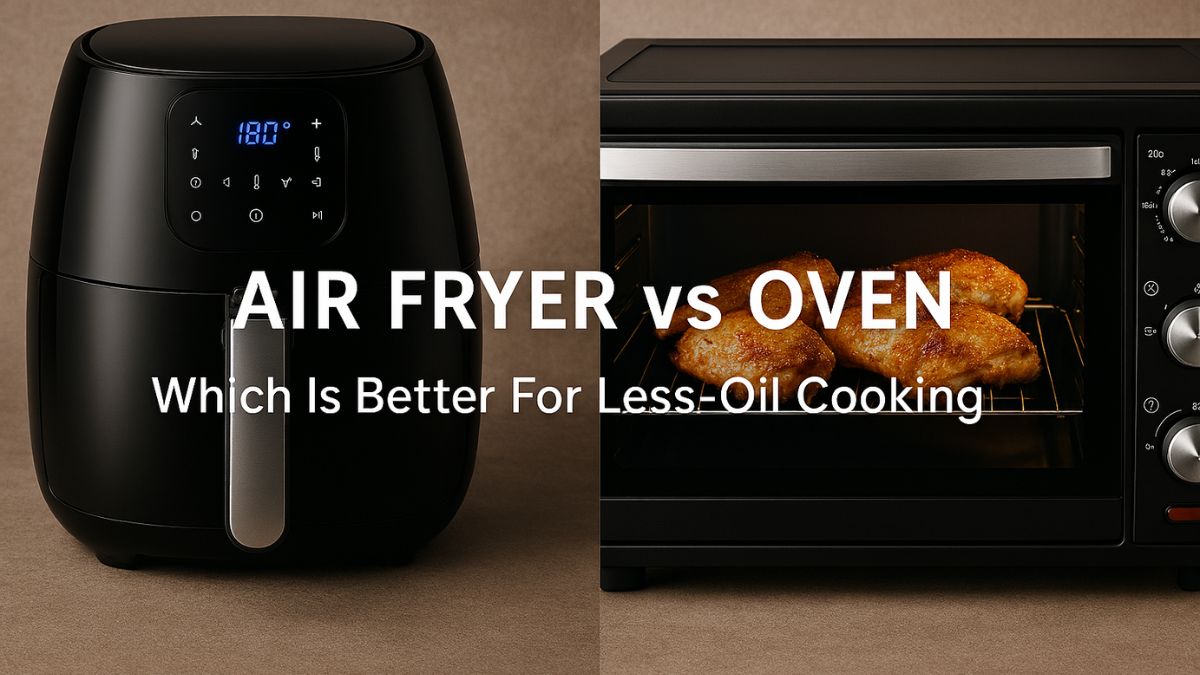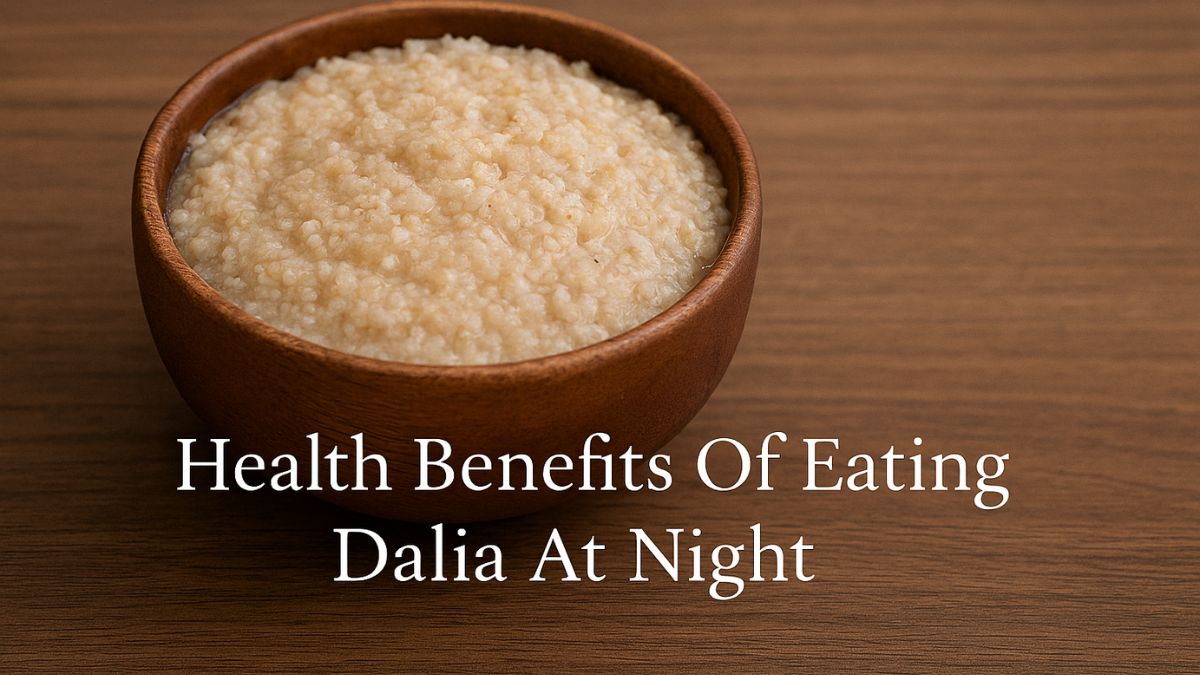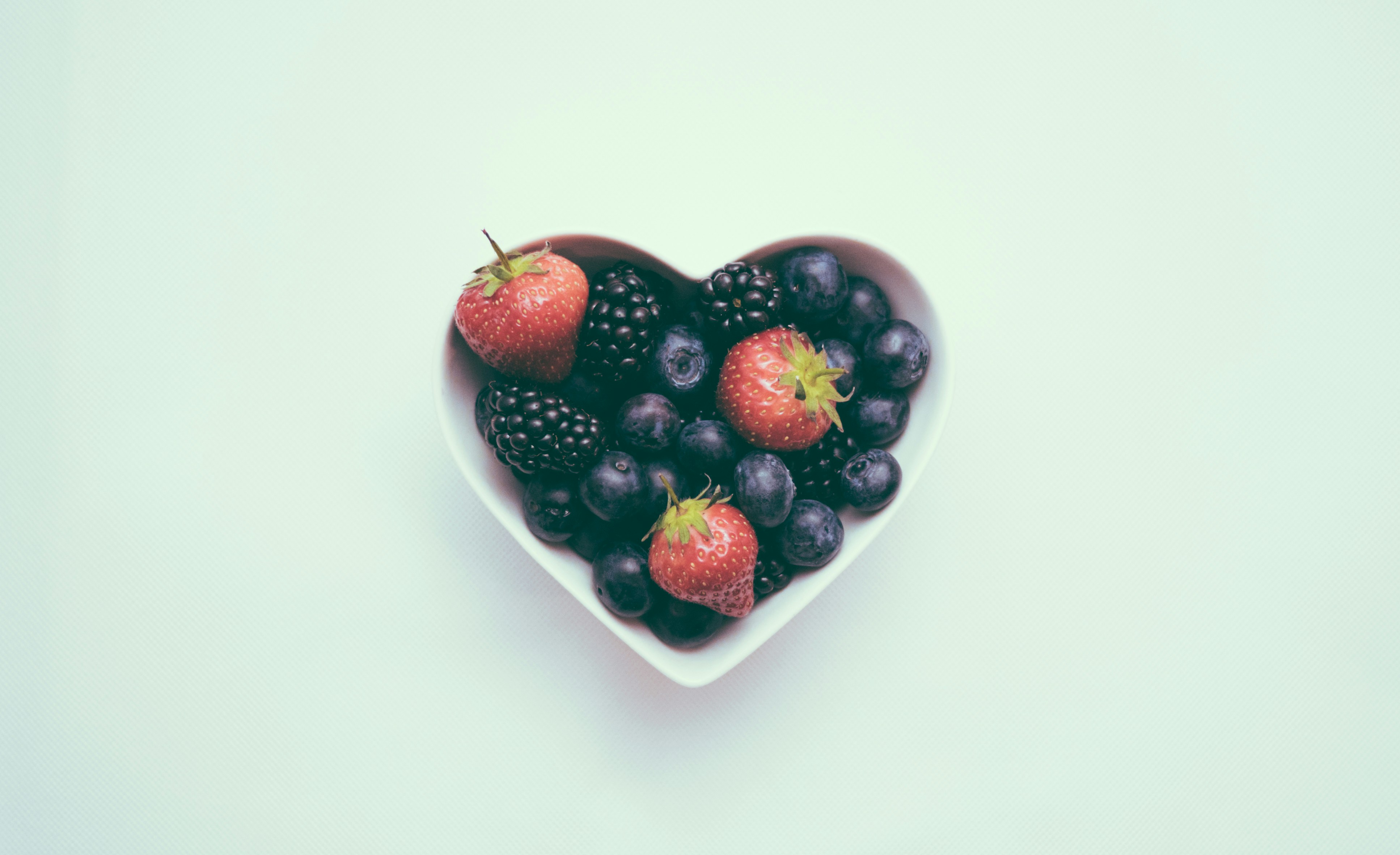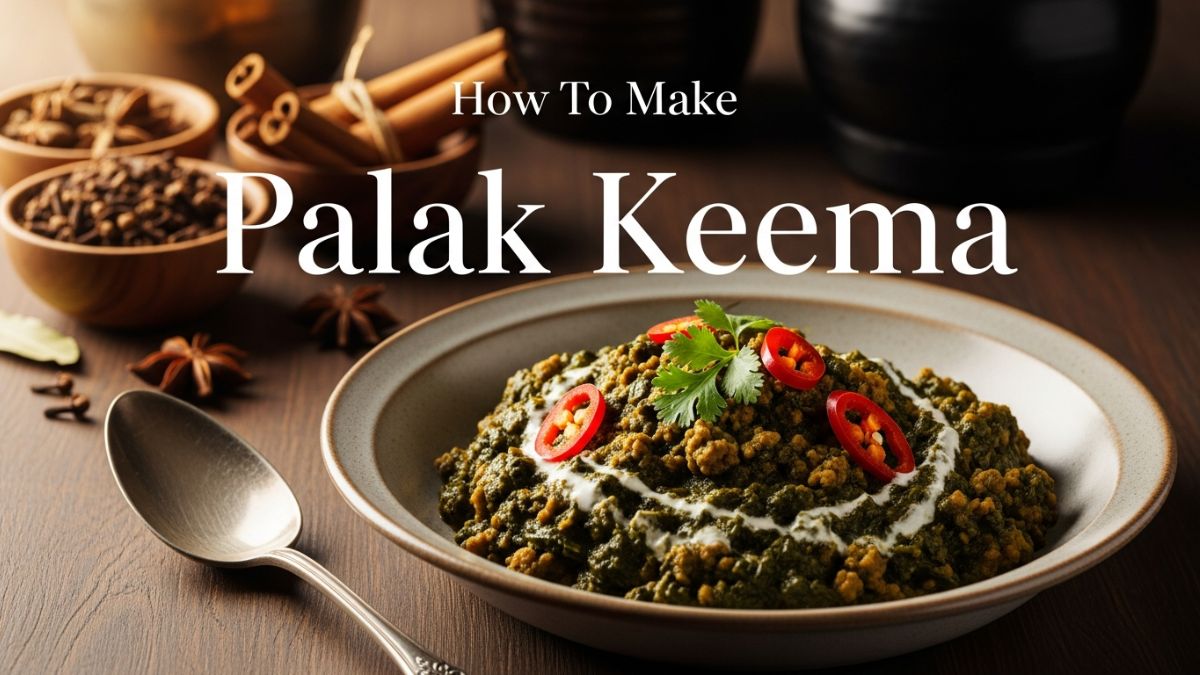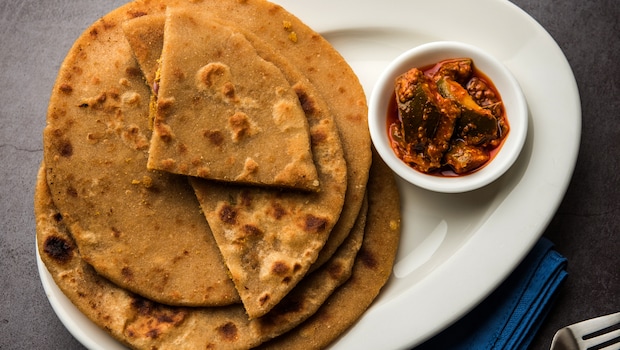There is something undeniably comforting about a warm, freshly made paratha. Whether stuffed with aloo, gobi, paneer or served plain with a dollop of white butter, parathas bring joy to every meal. From North Indian breakfast tables to late-night hostel cravings, this humble flatbread is loved across the country and beyond. But let us face it-parathas can get a little heavy. Traditionally cooked with generous amounts of ghee, butter or oil, they are rich in flavour but also loaded with calories. For those keeping an eye on weight or daily intake, enjoying a classic paratha can quickly feel like a guilty pleasure.
How To Make Parathas Healthier Without Using Ghee Or Oil?
Giving up parathas altogether? Not necessary. A few smart tweaks can make them lighter and more nutritious, without compromising on taste. Enter the high-protein, no-oil paratha. It is soft, flavourful and satisfying, bringing the same comfort as the original, but in a way that is kinder to your health. Whether looking for a protein boost, a weight-friendly Indian meal or just a fresh spin on a desi favourite, the no-oil paratha proves that healthy and hearty absolutely can go hand in hand.
Also Read: 5 Incredible Tips To Make Your Parathas Healthier And Tastier
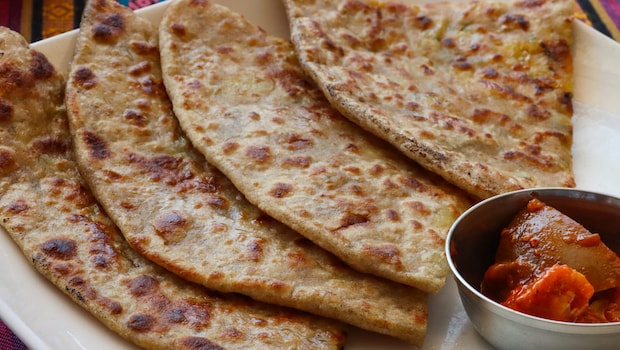
Photo Credit: iStock
5 Best High-Protein Fillings For Homemade Parathas:
Want to make parathas protein-rich? It all begins with choosing the right filling and flour. A high-protein paratha is not only more satisfying, but it also boosts energy, keeps hunger in check and supports fitness goals. Here are some tasty, nutrient-rich paratha combinations worth trying:
1. Paneer And Besan Paratha For Fibre And Protein:
Grated paneer is mixed with roasted besan, green chillies, ajwain and a hint of hing for a warm, nutty flavour. The besan adds structure to the stuffing, making it easy to roll and cook without breaking.
Why it works:
Paneer is a complete source of protein, while besan brings in fibre and plant-based protein. This combination is ideal for children, gym-goers or anyone looking for a wholesome bite.
2. Soya And Oats Paratha For Weight-Friendly Meals:
Soya granules are sautéed with onion, ginger-garlic, garam masala and a spoonful of curd for a moist, flavourful filling. Wrap it in dough made with oat flour or multigrain atta for a nutrient-dense paratha that is filling without feeling heavy.
Why it works:
Soya granules offer vegetarian protein, while oats bring in fibre and complex carbohydrates to keep hunger at bay.
3. Moong Dal Paratha With Greens For Iron And Protein:
Boiled moong dal is mashed and mixed with chopped greens like spinach or methi, along with cumin seeds and black pepper for a mild, earthy filling. Light, flavourful and packed with goodness.
Why it works:
Moong dal is easy to digest and protein-rich, while greens add iron, fibre and a pop of colour-perfect for a nutritious start to the day.
4. Vegan Tofu Paratha With Multigrain Dough:
Here is an option for vegans, too. Much like egg bhurji, crumbled tofu is cooked with spices and wrapped in regular atta for a wholesome paratha. Adding a bit of ragi or bajra flour provides an extra nutritional boost.
Why it works:
Tofu is low in fat, high in protein and absorbs spices beautifully, making the paratha taste delicious.
5. Leftover Dal Paratha Recipe To Reduce Food Waste:
Excess dal from the last meal? You don't need to waste it. Knead leftover dal into atta, add jeera, ajwain and coriander, and roll out a fresh batch of parathas.
Why it works:
This recipe is a time-saver, reduces food waste and still delivers a healthy dose of plant protein.
Also Read: 7 Healthy Paratha Fillings That You'd Love To Devour!

Photo Credit: iStock
How To Make Parathas Without Oil And Still Keep Them Soft?
Worried that skipping oil might ruin the taste and texture? Not at all. With the right techniques and a bit of patience, parathas can be just as soft, golden and satisfying-minus the grease.
1. Use a cast-iron or non-stick tawa:
A well-seasoned cast iron tawa or a reliable non-stick pan is key. Cast iron gives a beautiful, even heat and adds a rustic touch, while non-stick pans make flipping and roasting easier without needing any oil.
2. Cook on medium flame for even roasting:
Roast parathas on a low to medium flame so they cook through without burning. Press gently with a spatula in circular motions to help them puff slightly and cook evenly. Flip a couple of times for a golden finish.
3. Add curd or milk to the dough for softness:
If skipping oil, ensure the dough is moist enough. Kneading with curd, milk, or even buttermilk instead of water keeps parathas soft and locks in flavour.
4. Cover parathas after cooking to retain softness:
Once cooked, place parathas in a clean kitchen towel or roti box. Covering them right away helps retain moisture and keeps them warm and soft, just like the ones made with ghee.
Also Read: Is Paratha Healthy Or Does It Make You Fat? Expert Nutritionist Reveals

Photo Credit: iStock
Now, pair these zero-oil, protein-packed parathas with curd, homemade achar or even just a sprinkle of chaat masala - and trust us, the ghee-laden version will not be missed one bit.
Which of these combinations sounds tempting? Try them out and tell us how you liked these healthy, no-oil paratha recipes.
About Somdatta SahaExplorer- this is what Somdatta likes to call herself. Be it in terms of food, people or places, all she craves for is to know the unknown. A simple aglio olio pasta or daal-chawal and a good movie can make her day.
